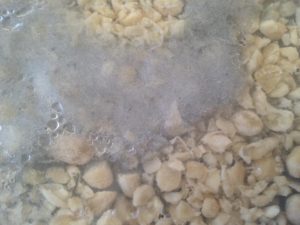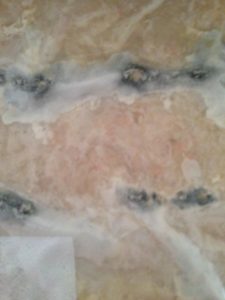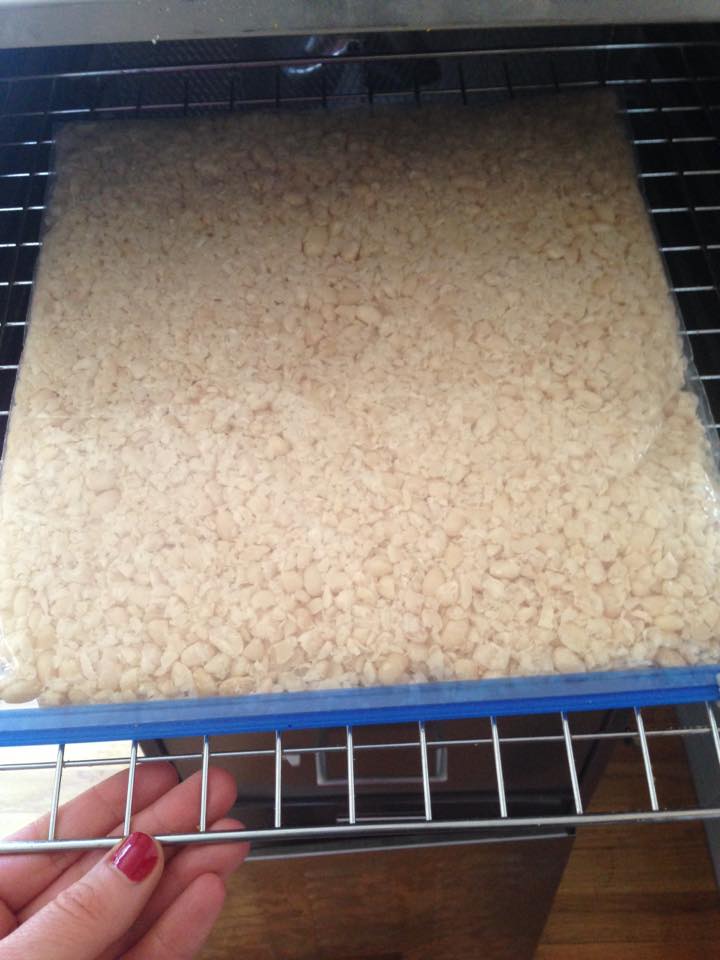
I have to admit that, so far, tempeh has been my fermenting kryptonite. I have attempted it twice; messed up both times and got ugly mold. Once, I accidentally bumped the temp knob on my dehydrator to the wrong temperature setting and overheated the sensitive cultures. The second time, I may have overcooked my beans, was lazy, didn’t take the hulls off and thought that if I blended them in the food processor it should work, but I got mold again.
Ingredients:
2 Cups dried beans
2 Tbsp vinegar
water
1 packet culture (usually 1 teaspoon per pound of dry beans, but it depends on how concentrated the inoculum is.
Sometimes the spores are mixed with rice flour, which ‘waters down’ the starter, but makes it easier to spread it evenly throughout the beans).

Method:
Soak the beans overnight. Cook them al dente and discard cooking water. Rinse and massage (aka de-hull) the beans (painful process if you are a Type A (me) or could be a great meditation).
While the beans are cooling, prepare a 1-quart zip-lock bag to ferment them in. The mold requires oxygen, so the bag must be poked all over with a push-pin, thick needle, or fork to create holes. Space them about 3/4” apart.
When the beans are dry, place them in a large bowl and toss with the vinegar, and then the culture. Stir well to make sure the culture is evenly distributed. Pour the inoculated beans into the prepared zip-top bag, seal it, and flatten into a thick pancake. It should be about 2” thick.
To culture the mold, the inoculated beans must be incubated at a temperature of 80°-90° for 20-30 hours. The tempeh is ready when the mycelium has spread all throughout and around the beans, making a firm cake. If the tempeh is left to ferment long enough, sporulation may occur, causing black spots to form on the white mold. This is normal, although the flavor will be a bit stronger. Caution: Never eat raw tempeh!
An oven with the light or pilot light on may provide sufficient warmth to incubate the tempeh. A food dehydrator can be used if the temperature setting goes low enough. A reptile heater or seedling mat (which I am going to try next time) may be placed in a box with the lid closed to retain heat. Caution: as fermentation goes on and the mycelium begins to spread, the tempeh itself will produce its own heat, so the temperature may need to be adjusted as this process continues. It’s possible that mine failed twice because it got overheated.

